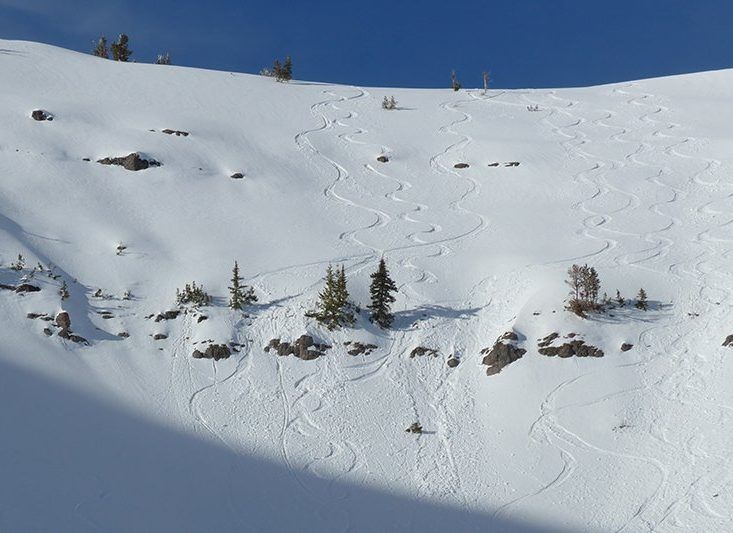Is it a Safe Line to Ski?
We’ve all been invited into touring groups where they say “Hey let’s go ski (insert intimidating line name in your local backcountry) tomorrow!” or some such daunting namesake. So we join the group, wake up excruciatingly early and begin the climb up. Upon hitting the top the group seems to get a vague kind of confusion about them… “Is it safe?” “Should we do this?” “%#*& yeah, let’s send it!!”
Is This Line Safe to Ski?
Trying to decide if dropping into a line is safe is a constant concern amongst backcountry travelers. There are a ton of variables and even more consequences. So how does one decide if it’s a go or a no?
Many avalanche professionals will strongly advocate the benefit of observational data. Was there lots of snowfall recently, was it windy, did the temperature noticeably change recently, have you seen fresh avalanches while touring up, as you tour are you seeing cracking or hearing that puckering “WHUMPF”?
At the same time, so many avalanche courses and avalanche experts put a lot of emphasis on snowpack tests. Did you see signs of weakness while doing a stability test, or did it show stability so you assume the slope is safe, did you get smooshed while you filmed some friends doing a rutschblock test? (editors note: Nate is Canadian, eh)
So which one do you take into consideration?
Simply stated the answer is both and neither. Observation on its own provides super useful information if you see natural avalanches occurring while you tour up…maybe things are pretty spicy. If its windy and you know it has snowed a decent amount maybe conditions don’t allow for big gnarly lines. However, the line you’re considering might be on a different aspect or protected from the wind. So do these observations directly affect your line choice?
Okay, you’re not sure, so you dig a profile (presuming you already have the training to do this and understand the information presented) to get a better picture of the snowpack . The issue with digging is a nerd term called spatial variability. A profile in one spot can give you information, but a profile 1 meter (3.3 Feet for you imperialists) away can show vastly different results. So the information provided by a profile can be very biased depending on where you dig when you dig and what tests you do. All too often I hear people using a snow profile as a “green light” to go ski something. In my opinion, if you are placing the final decision to go send it based on a snow profile…maybe it’s not somewhere you should have been in the first place. Instead, use a profile to gain information about the snowpack you are already familiar with. Do not use it as your concrete evidence that tells you to get rad.
Okay, so both and neither? Never rely on one set of information to make your decision. Observations are excellent and should be your first line of attack. If you are seeing cracking and it’s been windy and has snowed a bunch and there are natural avalanches all over…maybe don’t bother digging. Clearly its tiger country out there. Go have fun in safe low angle terrain instead. If you don’t see any of the “red flags” of observation out there then maybe dig a hole. What does the profile tell you? Is it solid, Is it spooky, Is it spatial variability messing with you?
There’s no solid answer, all of these bits of information need to be considered.
 Mountain Weekly News Editor Mike Hardaker, making a committed decision to drop in.
Mountain Weekly News Editor Mike Hardaker, making a committed decision to drop in.
Observations while touring up, information gained while digging a snow profile, constant awareness of the weather, and experience will help you piece it all together. If this sounds overwhelming then go tour with more experienced people to gain knowledge. And, as I was taught in a guiding course; there are old guides and bold guides. There are no old bold guides(or backcountry tourers in this case). Remember, there’s no shame in backing down from a line. Being smart is so much cooler than being dead. It’ll still be there next time.
Related Snow Safety Articles



